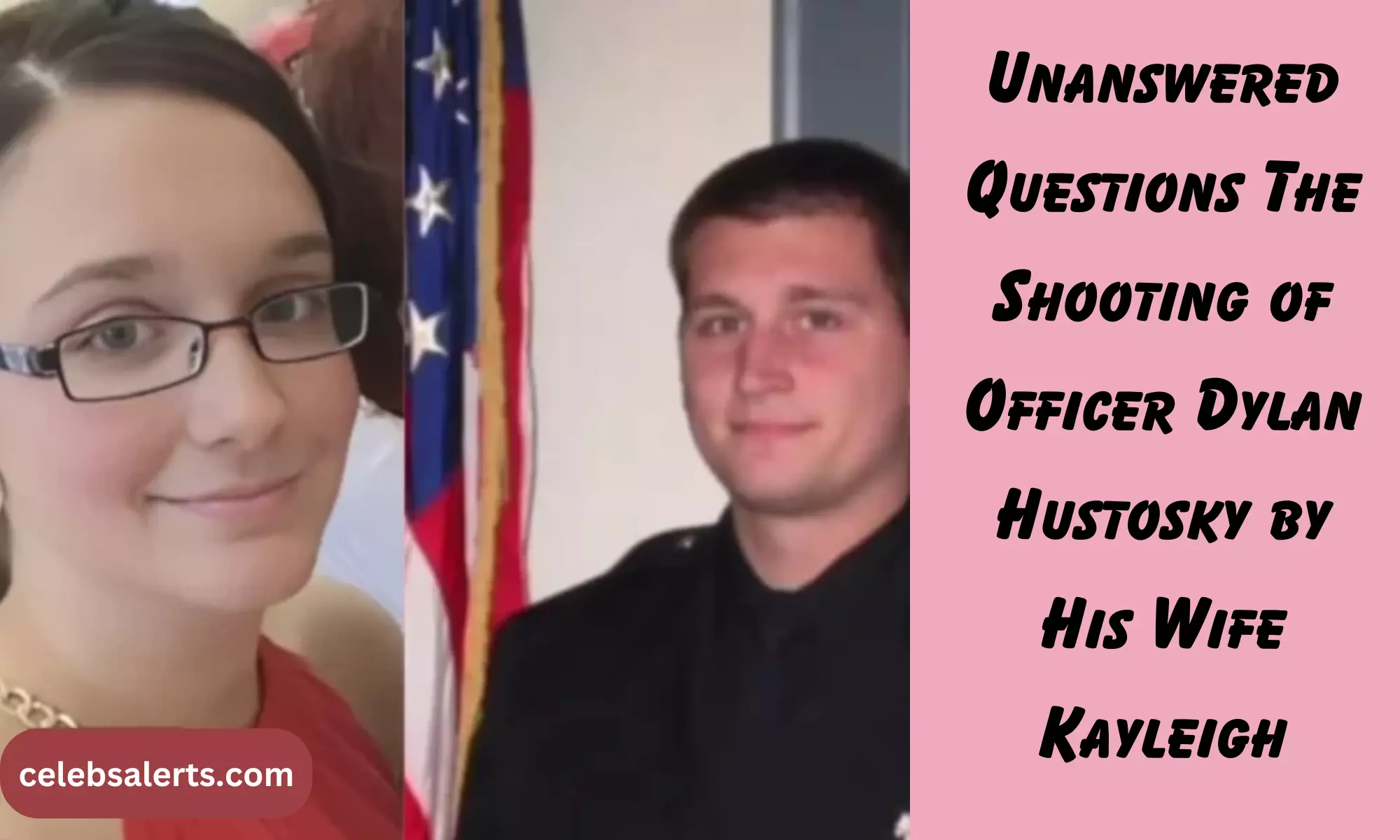The tragic shooting incident involving Officer Dylan Hustosky and his wife, Kayleigh Hustosky, has left many questions unanswered, drawing significant media attention and community concern. This incident, which occurred on August 13, 2018, in Painesville, Ohio, has raised critical discussions around mental health, law enforcement, and community support.
This comprehensive article aims to delve into the background of the Hustosky family, the details of the shooting, the aftermath, and the ongoing investigation, highlighting the profound impact on the community and the law enforcement profession.
Background of the Hustosky Family
The Hustosky family, like many others in their community, portrayed a seemingly normal life. Dylan Hustosky, a dedicated officer with the Gates Mills Police Department, had built a reputation as a committed law enforcement professional. Kayleigh Hustosky was known for her supportive role in Dylan’s life and career.
Family Dynamics
Family dynamics play a significant role in understanding the events leading up to the shooting. The Hustoskys had two children, who were often mentioned in discussions about their family life. The pressures of family life, combined with the stress inherent in law enforcement, can contribute to emotional strain.
Key Elements of the Hustosky Family:
- Dylan Hustosky: Law enforcement officer known for his community service.
- Kayleigh Hustosky: Supportive wife, a mother who managed household dynamics.
- Children: Two young children, whose well-being became a focal point after the incident.
The complexities of their relationship and family life are essential in assessing the incident’s broader context.
Dylan Hustosky’s Career and Life
Dylan Hustosky’s career in law enforcement was marked by dedication and service. He had a notable track record, making contributions that resonated within the community he served.
Professional Background
Dylan had served in the Gates Mills Police Department for several years. His colleagues and superiors praised his commitment to public safety. As a police officer, he dealt with various crises, from domestic disturbances to community outreach programs.
Key Achievements in Dylan’s Career:
- Years of service with the Gates Mills Police Department.
- Participation in community policing initiatives.
- Training in crisis intervention and domestic violence response.
Personal Life Aspects
Beyond his professional persona, Dylan’s personal life revealed the struggles many officers face. Balancing the demands of his job with family responsibilities often created significant pressure. Understanding this duality provides insight into the tragic events that unfolded.
Kayleigh Hustosky’s Life and Role
Kayleigh Hustosky’s life before the incident paints a picture of a woman deeply involved in her family’s affairs. Her relationship with Dylan had its challenges, but she was viewed as a supportive partner.
Overview of Kayleigh’s Background
Kayleigh, like many spouses of law enforcement officers, faced the unique challenges that come with such a lifestyle. The emotional strain of having a partner in a dangerous profession can lead to significant stress, affecting both mental health and family dynamics.
Key Aspects of Kayleigh’s Life:
- Background: Educated and actively engaged in family life.
- Role in the Community: Known for her involvement in local events and support for her husband’s career.
- Challenges: Balancing family responsibilities with the pressures of her husband’s job.
The Fateful Day: August 13, 2018
The events of August 13, 2018, are etched in the memory of the Painesville community. This day marked a tragic turning point, leading to profound implications for the Hustosky family and local law enforcement.
Morning Routine
The morning of the incident seemed typical at first glance. Reports indicate that the family went through their usual routine. However, underlying tensions may have been present.
Events Leading Up to the Incident:
- The Hustosky family began their day as normal.
- There were indications of distress, although specifics remain unclear.
- Reports of a distress call from Kayleigh initiated the emergency response.
The Shooting Incident
As the day progressed, a call for help changed everything. The shooting occurred during what should have been an ordinary day, transforming into a tragic event.
Details of the Shooting:
- The incident unfolded at their home on Cedarbrook Drive.
- Witnesses reported hearing a gunshot and calls for help.
- Emergency responders were immediately dispatched to the scene.
The circumstances of the shooting have led to various theories and speculations, highlighting the complexities of domestic situations involving law enforcement families.
Emergency Response and Police Efforts
The response to the incident showcased the challenges emergency services face in such situations. Both the Painesville Police Department and the Lake County SWAT team were involved.
Initial Response
Upon receiving the distress call, law enforcement officers arrived promptly at the scene.
Emergency Response Highlights:
- Quick deployment of officers to secure the area.
- Immediate medical treatment provided to Dylan.
- Coordination between multiple law enforcement agencies.
Medical Treatment
Dylan was transported to TriPoint Medical Center in Concord Township, where he received emergency care for his gunshot wounds. The response team faced the challenge of managing a potentially volatile situation while ensuring medical needs were met.
Key Medical Response Facts:
- Dylan sustained serious injuries but survived the shooting.
- Medical personnel provided critical care during the transport to the hospital.
- Ongoing medical assessments were crucial for his recovery.
Discovery of Kayleigh’s Body
The tragic discovery of Kayleigh’s body added another layer of complexity to the incident. Law enforcement officials found her deceased at the scene, prompting further investigations into the circumstances surrounding the shooting.
Impact of the Discovery
The finding shocked the community and raised numerous questions about the relationship between the Hustoskys.
Reactions to the Discovery:
- Community members expressed deep sorrow and confusion.
- The loss of Kayleigh impacted not just the family but the entire law enforcement community.
The emotional trauma from this discovery rippled through Painesville, affecting many individuals connected to the Hustosky family.
The Aftermath
The aftermath of the shooting left the community in shock. Many rallied around Dylan, offering support during his recovery.
Community Shock and Support
The emotional fallout from the incident was palpable. Community members banded together to provide support for the Hustosky family.
Key Aspects of Community Support:
- Vigils and memorials held in Kayleigh’s honor.
- Fundraising efforts to assist Dylan and their children.
- Community outreach programs focusing on mental health awareness.
Dylan’s Recovery
Dylan’s journey to recovery was arduous. He faced not only physical healing but also emotional challenges stemming from the incident. The community’s support played a crucial role in his recovery process.
Dylan’s Recovery Process:
- Physical rehabilitation for his gunshot wounds.
- Emotional support through counseling and community programs.
- The impact of being a public figure during recovery.
Investigation and Speculations
The investigation into the shooting drew considerable media attention, and various theories emerged.
Overview of the Investigation Process
Law enforcement officials conducted a thorough investigation, but many aspects remain unresolved.
Key Investigation Highlights:
- Evidence collection at the crime scene.
- Interviews with witnesses and community members.
- Analysis of communication records between Dylan and Kayleigh prior to the incident.
Public Speculation
With limited information available, the public began to speculate about the motives behind the shooting. Various theories emerged, some based on Kayleigh’s mental health status.
Key Theories and Speculations:
- Undiagnosed or untreated mental health problems may have played a role.
- Domestic violence concerns raised questions about the family dynamics.
- Possible indications of a standoff before the shooting.
Unresolved Issues and Theories
Several unanswered questions linger regarding the incident, creating ongoing community interest and concern.
Lingering Questions About the Incident
The tragedy led to speculation regarding the underlying motives and circumstances.
Key Unanswered Questions:
- What prompted the distress call from Kayleigh?
- Were there signs of domestic violence or mental health issues?
- What specific events occurred during the shooting?
Theories Surrounding Kayleigh’s Mental Health
Mental health awareness is crucial in understanding the complexities of this incident. Kayleigh’s mental state leading up to the event remains a point of discussion.
Important Considerations:
- The stigma surrounding mental health may have affected her willingness to seek help.
- Accessible resources for mental health could have made a difference.
- The role of stress and trauma in law enforcement families.
Suspicious Circumstances Surrounding the Shooting
As investigations continued, various suspicious circumstances surrounding the shooting emerged. Many questioned the narrative presented to the public.
Examination of Inconsistencies
Community members began to voice concerns about the details of the incident as they surfaced.
Key Inconsistencies Noted:
- Contradicting eyewitness accounts raised eyebrows.
- The timeline of events leading up to the shooting became increasingly scrutinized.
- Speculation about the possibility of a standoff added to community concern.
Impact on Law Enforcement Community
The shooting incident not only affected the Hustosky family but also had broader implications for the law enforcement community.
Community Response
The Gates Mills Police Department, along with surrounding agencies, faced challenges in coping with the aftermath.
Key Impacts on Law Enforcement:
- Increased focus on mental health resources for officers and their families.
- Recognition of the importance of crisis intervention training.
- Discussions surrounding domestic violence within law enforcement families.
Lessons Learned and Moving Forward
The tragic shooting of Officer Dylan Hustosky serves as a critical reminder of the importance of mental health and support systems for law enforcement families.
Key Takeaways
- The necessity for ongoing mental health awareness and accessible resources.
- The need for community support systems in times of crisis.
- Recognition of the emotional trauma faced by law enforcement families.
Moving Forward
As the community continues to heal, it’s essential to reflect on the lessons learned from this tragedy. Ensuring that officers and their families have the necessary resources and support is vital for preventing similar incidents in the future.
Conclusion
The shooting incident involving Dylan Hustosky and Kayleigh Hustosky remains a profound tragedy, touching the lives of many in the Painesville community. As questions persist and investigations continue, the need for mental health awareness and support within the law enforcement community has never been more critical.
In reflecting on this incident, the community’s response demonstrates resilience, compassion, and an unwavering commitment to understanding the complexities of mental health and the challenges faced by those in law enforcement. This tragedy, while heartbreaking, has sparked essential conversations that will hopefully lead to better support systems and resources for families like the Hustoskys.
Key Facts and Figures
| Entity | Details |
|---|---|
| Dylan Hustosky | Officer at Gates Mills Police Department |
| Kayleigh Hustosky | Dylan’s wife; deceased at the scene |
| Incident Date | August 13, 2018 |
| Location | Cedarbrook Drive, Painesville, Ohio |
| Medical Facilities | TriPoint Medical Center, MetroHealth Medical Center |
| Community Response | Vigils, support groups, mental health awareness |
The Hustosky family tragedy highlights the importance of addressing mental health issues within law enforcement, and the need for comprehensive support systems that prioritize the well-being of both officers and their families.











